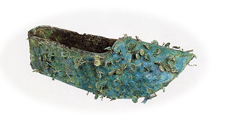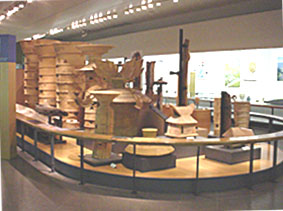

Kofun Period
(late 3rdC.--end of the 6thC.)
The late 3rd century is characterized by the establishment of the early Yamato regime and the construction of large keyhole-shaped tumuli (burial mounds) which symbolized the power of the ruling class. Many bronze mirrors, cane jasper end caps, bracelets and iron weapons from China have been found in the major keyhole-shaped tumuli which are over 200 meters long. This informs us of the political and religious power of these buried rulers. From the Makimuku site, which is considered as an early capital, numerous pottery which suggests a wide range of trade in the Japanese archipelago have been found. This also informs us about the distribution of the economical and political power of the rulers of this period.
bronze morror
(Shimoikeyama kofun tumulus, Tenri City)
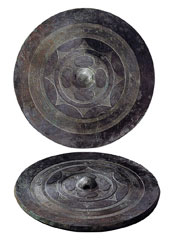
magatama; commma shaped pendant top
(Niizawa senzuka No.500,
Kashihara City)
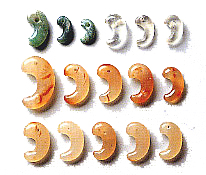
CGimage of Hashihaka kofun tumulus: keyhole-shape, one of the oldest tumuli (Sakurai City)
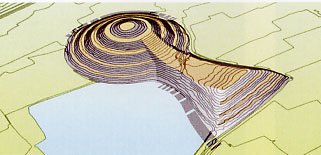
Canes with jasper end caps
(Sakurai Chausuyama kofun tumulus, Sakurai City)
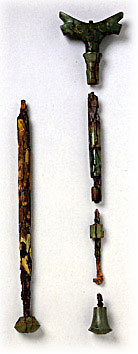
stone bracelets buried as grave goods
(Shimanoyama kofun tumulus)
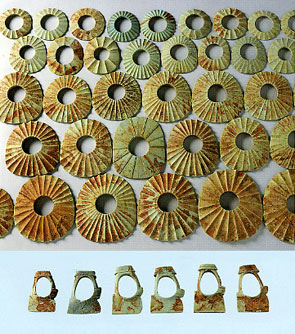
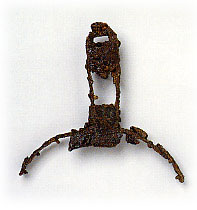
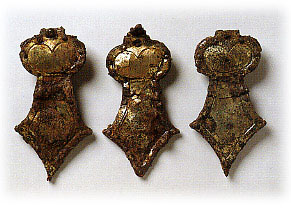
horse riding was also introduced during Kofun period and gears for horse
riding were found as burial goods
left: stirrups (Uwanabe kofun tumulus No.5, Nara City)
right: gyoyo ornament for harness (Sekkozan kofun tumulus)
In the 5th century, an interest in foreign relations occurred. Several ruling elite united to act as one and tried to establish a place in East Asia. These foreign interactions caused previously unknown advanced material cultures, technology and information from the Korean peninsula to be introduced to the Yamato regime. An example is the iron technology which enabled the society, the ruling elite, and even the local leaders of small areas to become even wealthier.
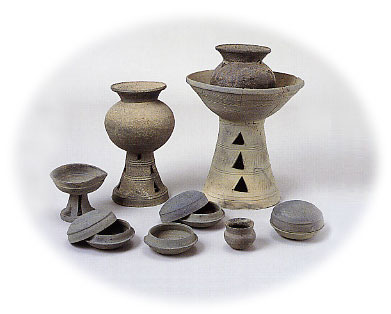
group of sueki pottery
sueki pottery, fired in kiln at high temperature, is another important
foreign technology importation
(Teraguchi Oshimi tumulus E-21, Katsuragi City)
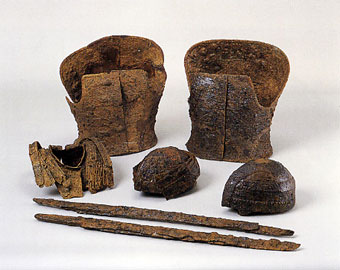
armor and swords
(Niizawa senzuka, Kashihara City)
In the 6th century, the local leaders of small areas began to gain power. This can be seen by the appearance of many clustered minor tumuli made in various areas of the Japanese archipelago. The ruling elite put more effort into interactions with East Asia in order to find new political and economical systems which would enable them to rule these local leaders. This is shown by the East Asian motifs on the horse trappings found at the Fujinoki site.
gilt bronze saddle and elephant and phoenix motifs on it
(Fujinoki kofun Tumulus, Ikaruga Town)
elephant
phoenix
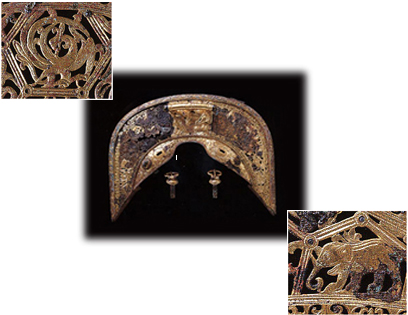
gilt bronze crown
(Fujinoki kofun Tumulus, Ikaruga Town)
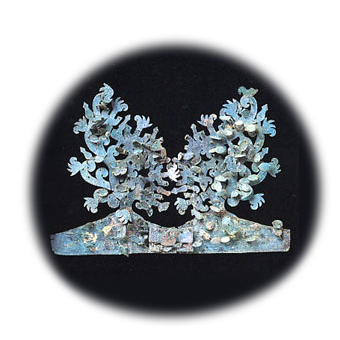

shoes found in the undisturbed stone coffine
(Fujinoki kofun Tumulus, Ikaruga Town)
